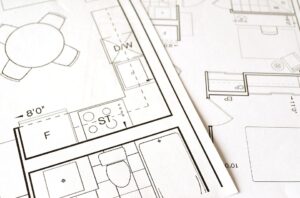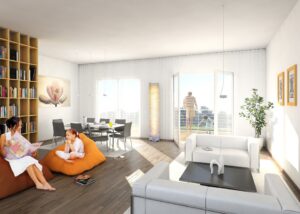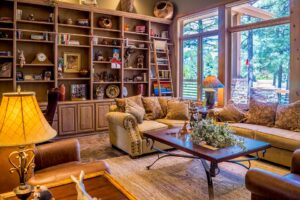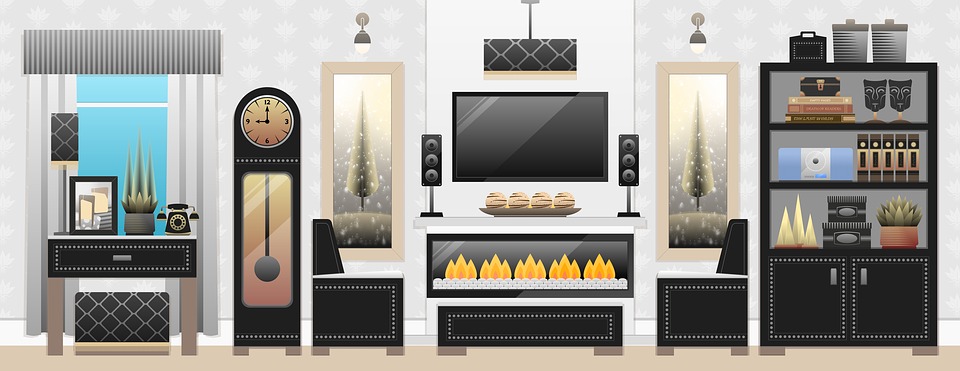So, you’ve bought or rented a new home and are looking forward to relocation. Good for you! Bear in mind, however, that moving from one home to the other is an exhausting project. And although most of our tips and guidelines connect to the aspect of moving, there are times when we focus on other aspects as well. Today is one such day when we will look more towards what comes before the actual relocation. And that is the matter of planning the layout of your new home. Trust us, when you are planning on relocating to New Jersey (or any other location for that matter), this is something you want to take care of. And we are here to offer some advice on the topic.
Planning the layout of your new home in 4 phases
Arranging the order in your new household might seem like a breeze, but it is far from it. In fact, most people find it difficult to visualize the space and how to fit in all their belongings. And, unfortunately, this wrong assessment usually leads to overestimating the space you have. The result of this – clutter from day 1. So, what can you do resolve the issue and make a realistic plan?Phase 1 – Assess the space in your new home
- The best view is a clear view. What exactly do we mean by this? Simple – you have to have an empty space in order when planning the layout of your new home. So, if you are still preparing for the move, delay the packing services NJ and focus on this instead. And if you’ve already moved in, clear the room from all the boxes and furniture.
- Consider how you want to use the space. There is a difference you have to make here – between your view of a room and the general purpose of a room. So, you need to make sure that the room in question is both functional and ascetically pleasing. Consider how you can achieve both of these for the entire household.
- Rooms with a dual purpose. You will always have those rooms with multiple purposes. And this is where you need dividers in the form of rugs, furniture, bookshelves etc. In fact, this is where furniture moving expertise can come in handy. You can arrange for your residential movers NJ to stage everything while unloading.
- Consider the focal points in the rooms. Every room has a centerpiece of a focal point around which everything else is positioned. Whether this will be a fireplace or shelf with a flat-screen TV is up to you. But the fact remains that this is important for planning the layout of your new home. This will also serve to determine the traffic of the room, given the positions of doors and exits.

You have to consider the traffic and focal points of a room when planning the layout of your new home.
Phase 2 – Consider the placement of furniture
- Use models made out of paper. If you don’t want to have to drag furniture across rooms countless times, why not plan it on a smaller scale? All it takes is some hard brown paper and the measurements of each furniture piece. Once you have that, making a 3D model of it all will be easy. Yes, this takes time and energy, but it also offers the best sense of spacing in the room. And that is ultimately what you want when planning the layout of your new home.
- 3D rendering tools. There are many apps today that can serve to assist you in this challenge. You can use these online tools to create a digital model of your room, complete with doors and windows. Once you have that, it’s just a matter of inserting the furniture pieces into the equation. And voila – you have a way not only to fit your current furniture pieces but to also test out any new items you might wish to add. A great and efficient way to plan your home before your furniture movers NJ even unload the truck.

3D rendering software is great for visualizing the space you have before you move in.
Phase 3 – Just a matter of balance now
- You need to combine heavy furniture pieces with groupings of smaller objects or other robust pieces. This is planning the layout of your new home 101.
- Never leave the middle of the room empty by piling everything against the walls. It’s good to have space for work or conversation.
- Use the appeal of multi-levels within a space. You want to make the room appear taller than it is, so you need to add height to the shorter pieces inside it. How? Simple – you hang a print on the wall above, to make the eye look at it, thus making the room appear higher.
- A moderate use of patterns and colors. If you want to make a room come alive, you need to add lively colors in the form of pillows, curtains, decorative art etc. Just remember not to force a single color too much, but to introduce several multi-colored patterns.
- Texture plays a key role as well. Like colors and patterns, you need to consider the use of different textures to add depth to a room. Marble, metal, silk, wood… these are all different materials you can combine to make the room more appealing.

You need to find the right balance of texture, lighting, colors, items etc.
Phase 4 – Final thoughts before arranging your home
- Take into consideration traffic flow – the two-foot space minimum to secure movement from one room to the next.
- Furniture arranging comes first, hanging pieces come last.
- Once you have the large furniture pieces set out, next come smaller pieces: coffee tables, chairs, plants etc.
- Always check if drawers and doors have enough room to open.
- Consider lighting in a room and what amount of natural or artificial lighting suits it best.
- In rooms with TVs or large screens, consider the minimal distance between it and the viewers.


